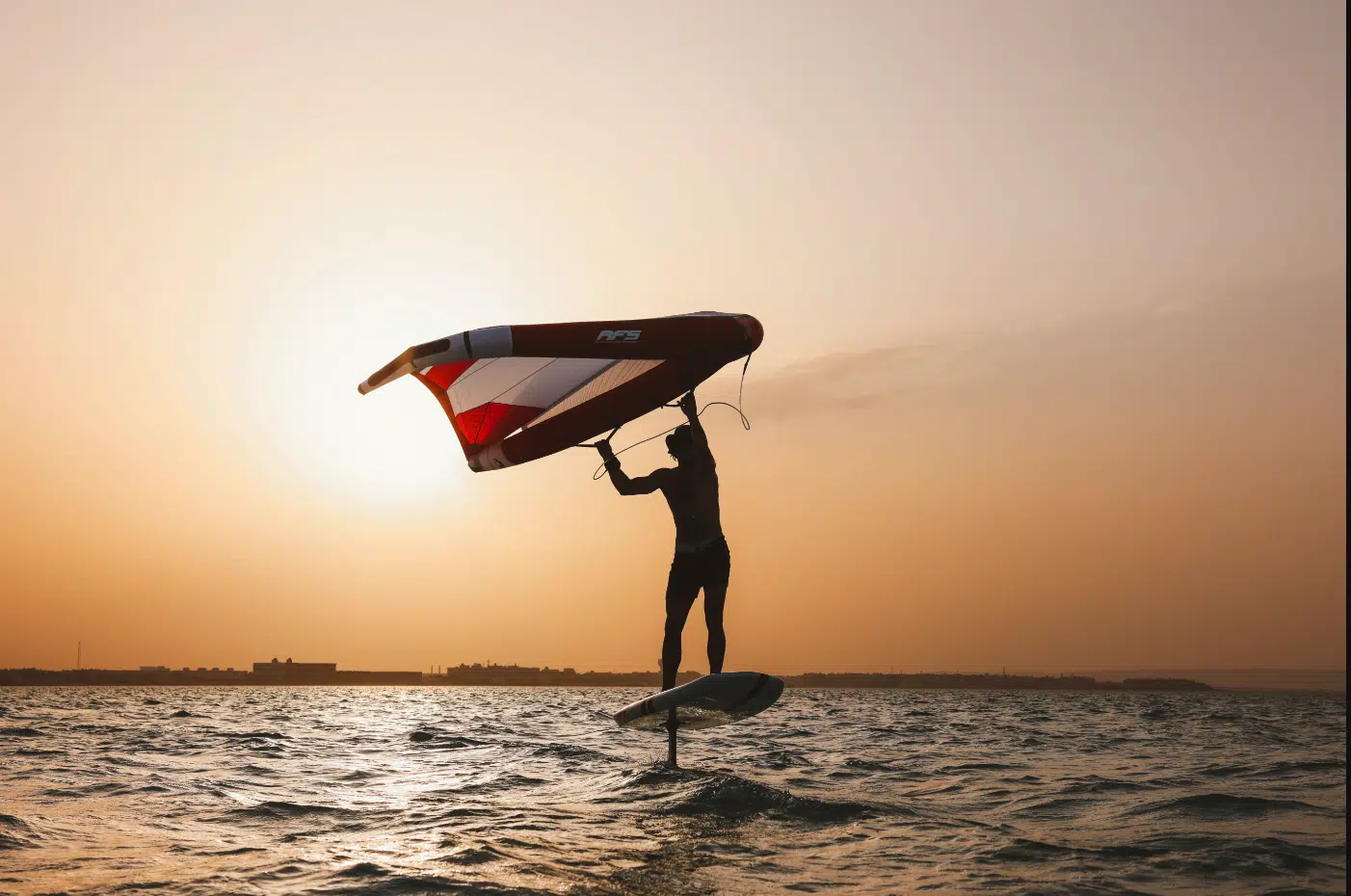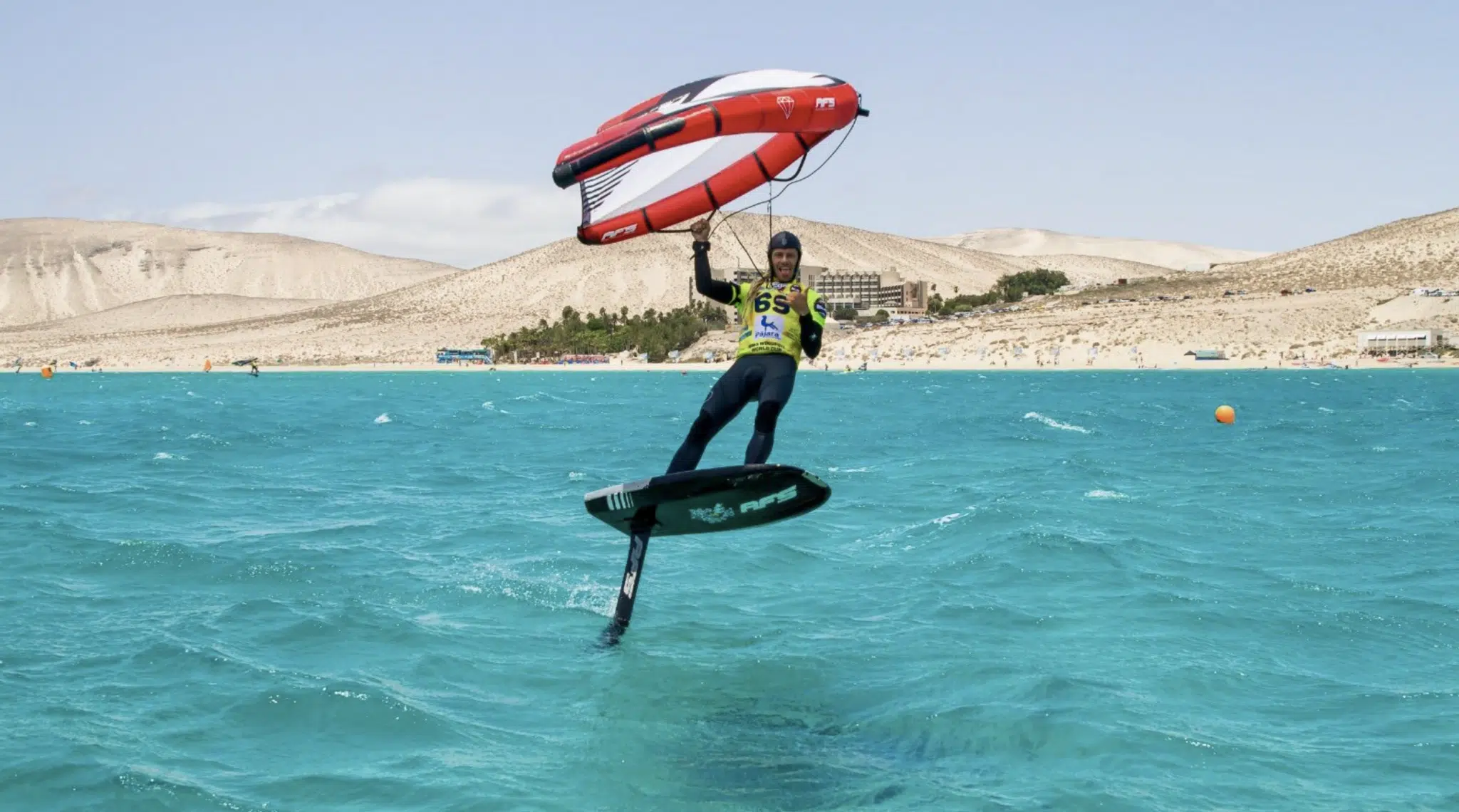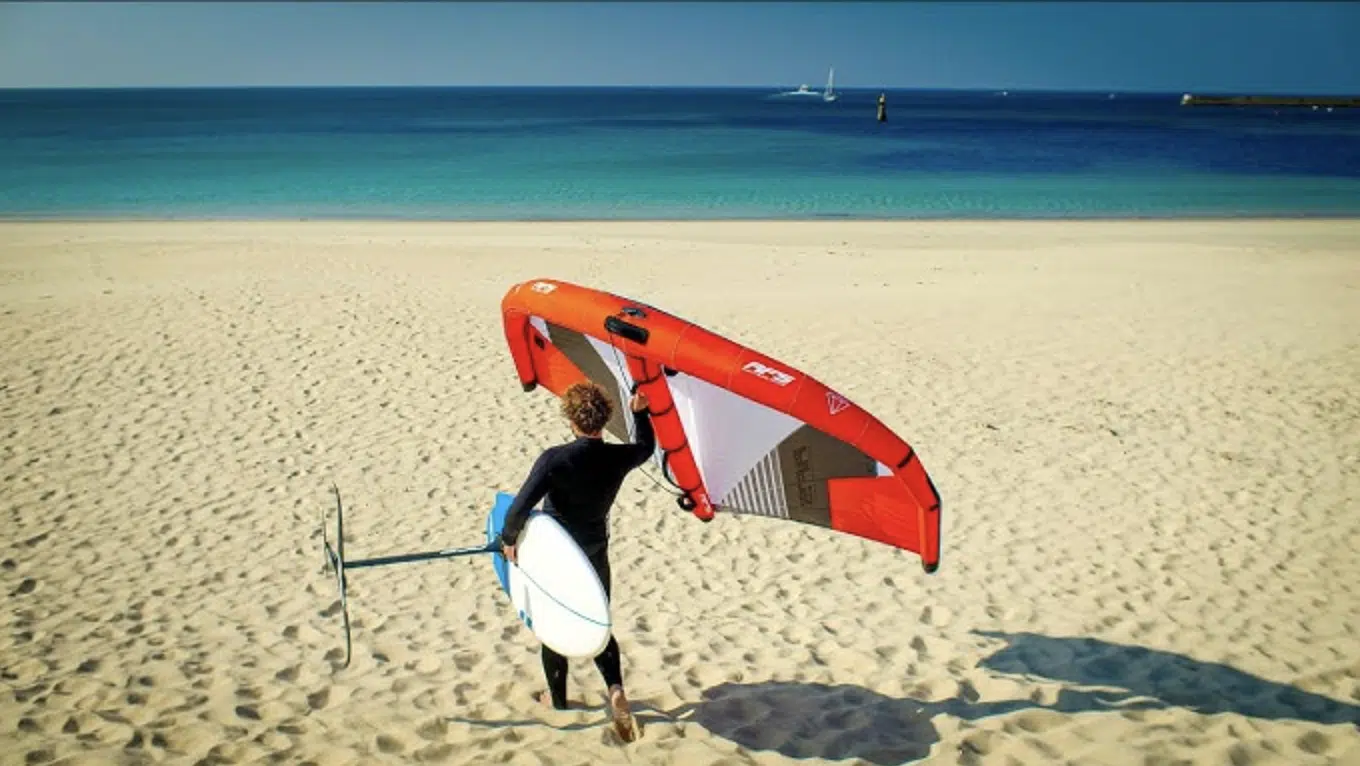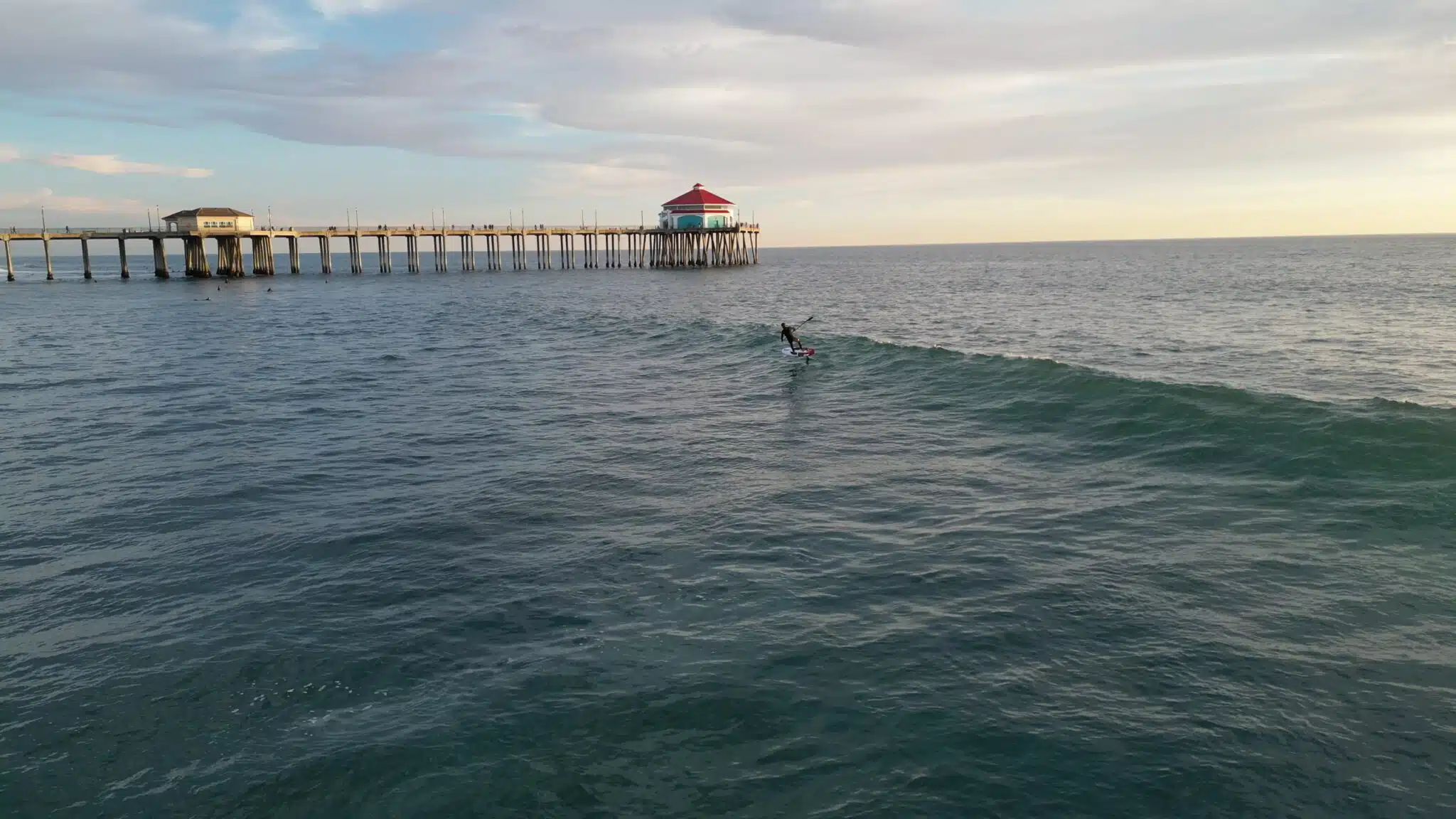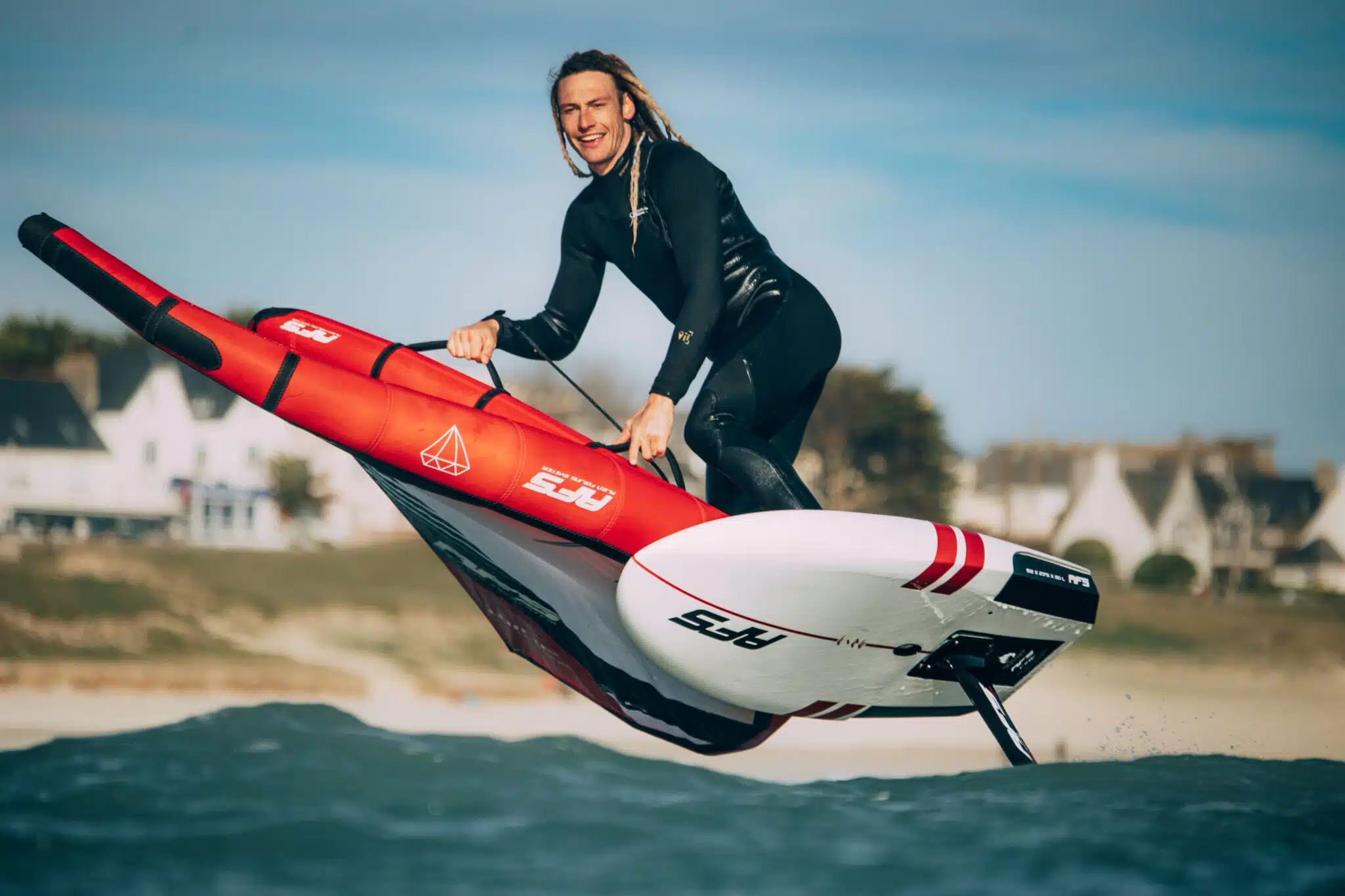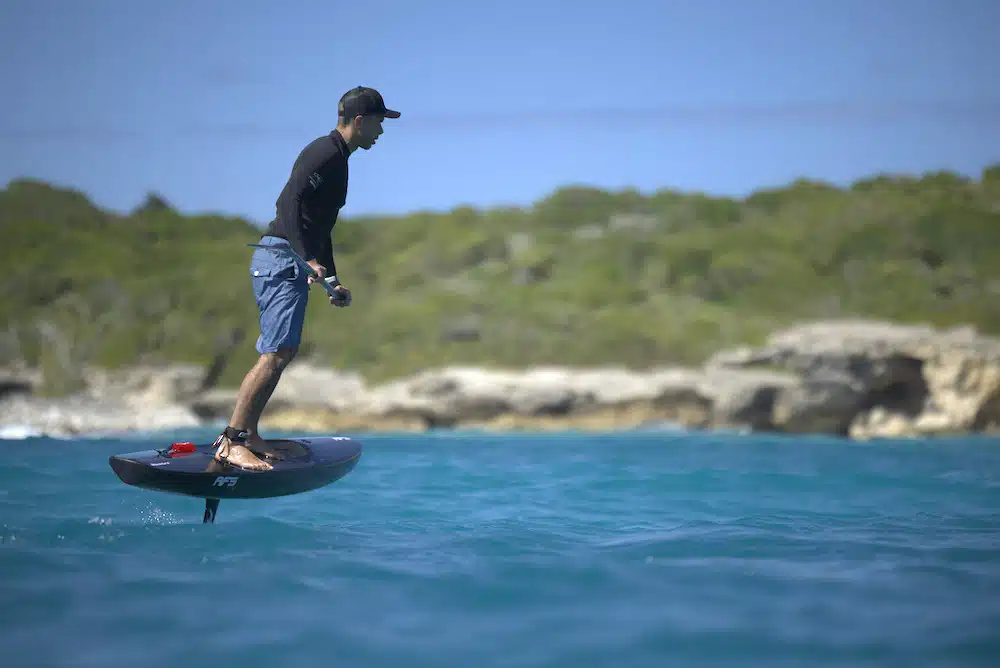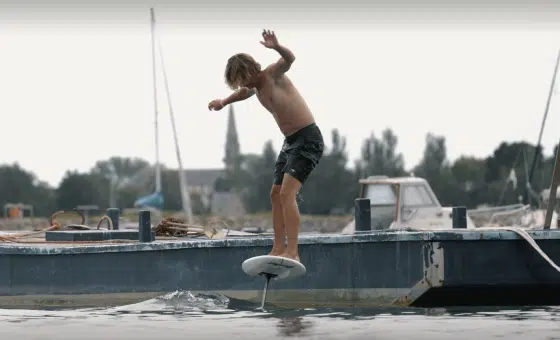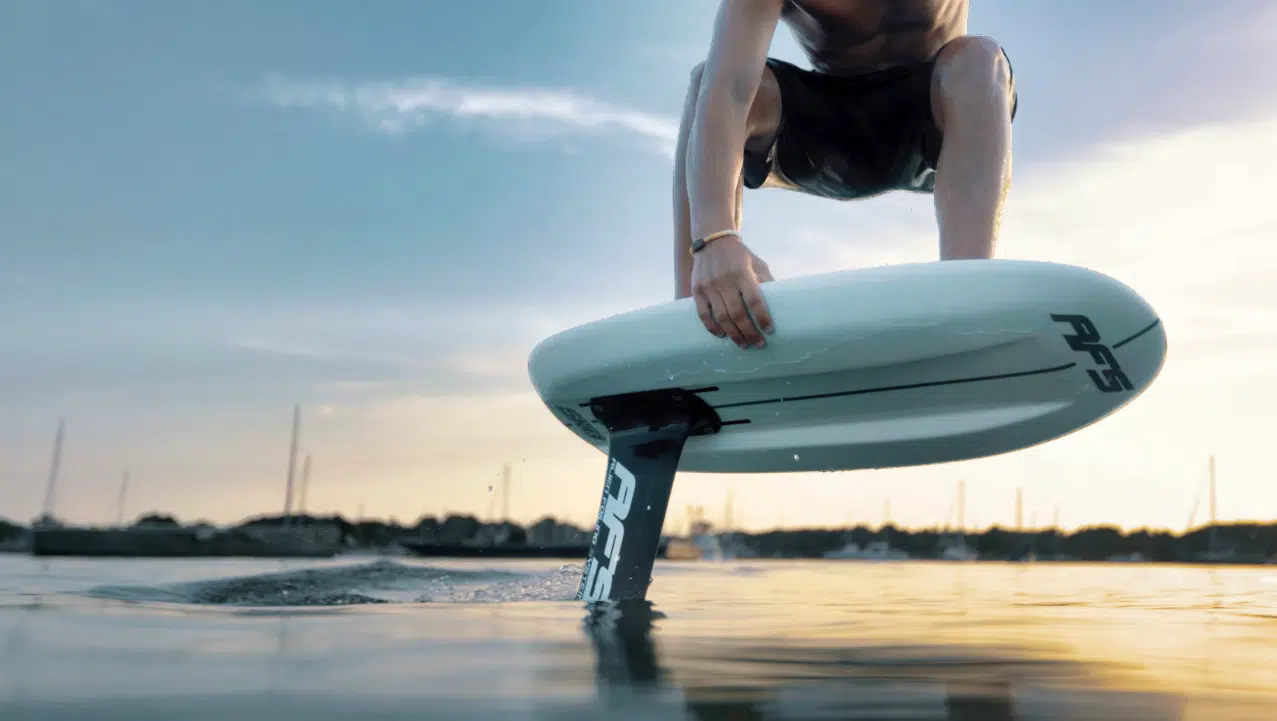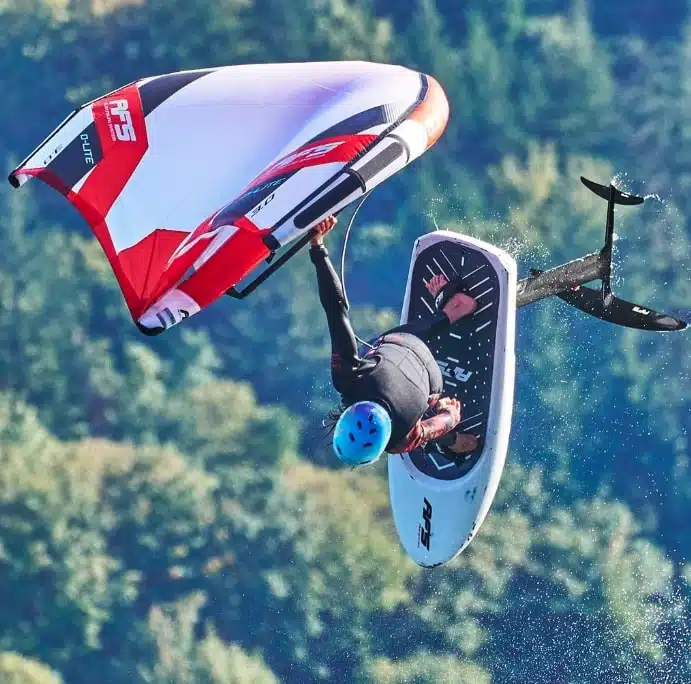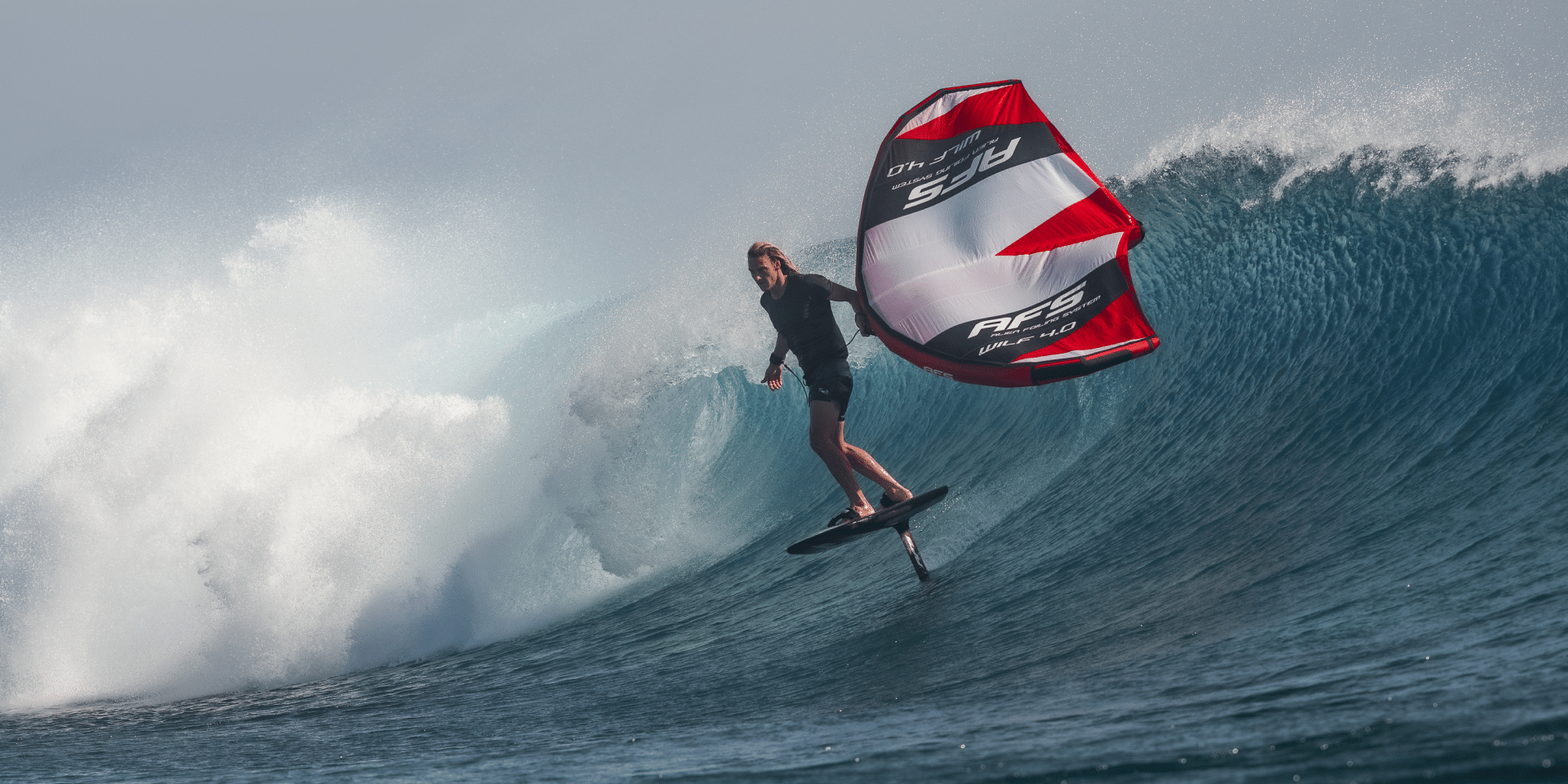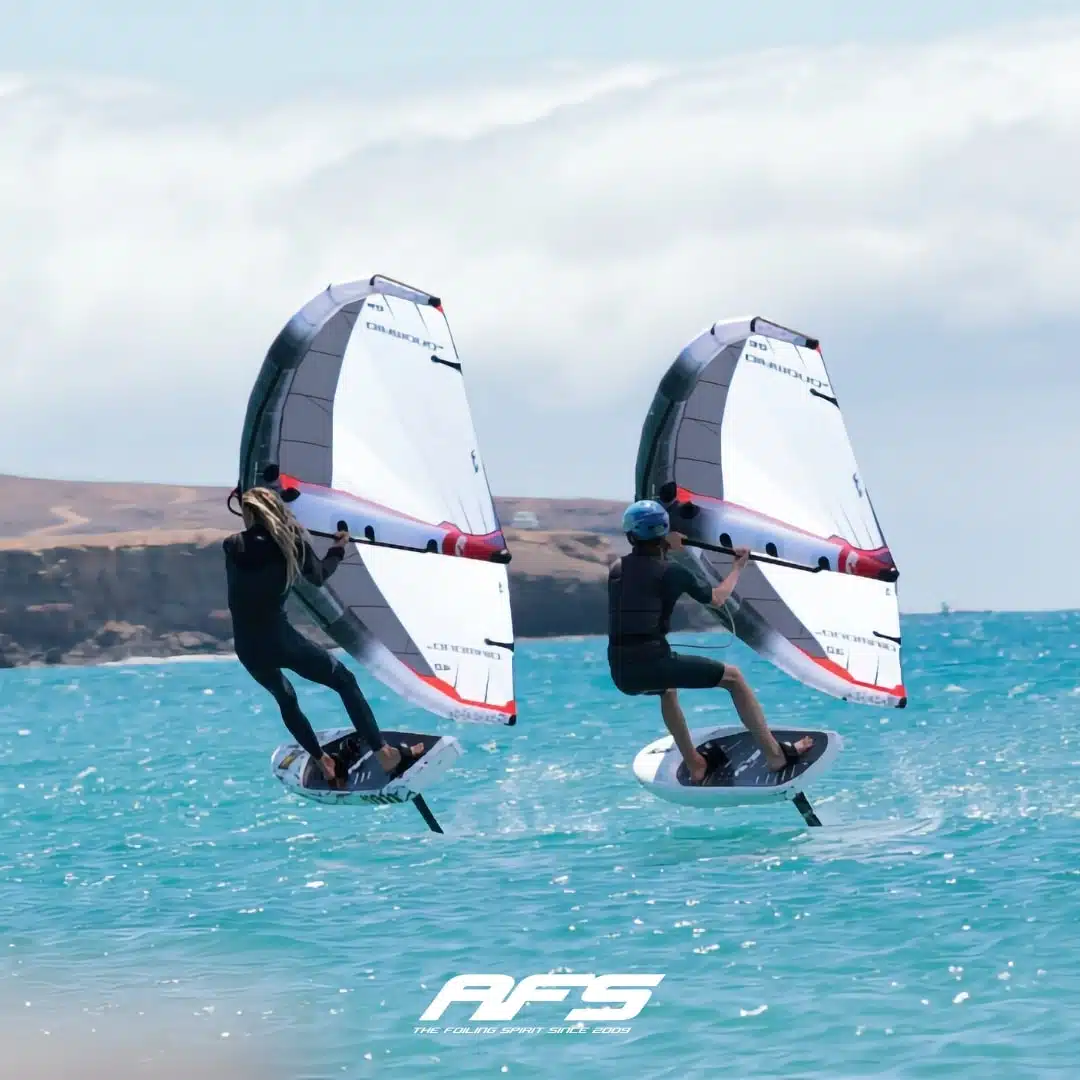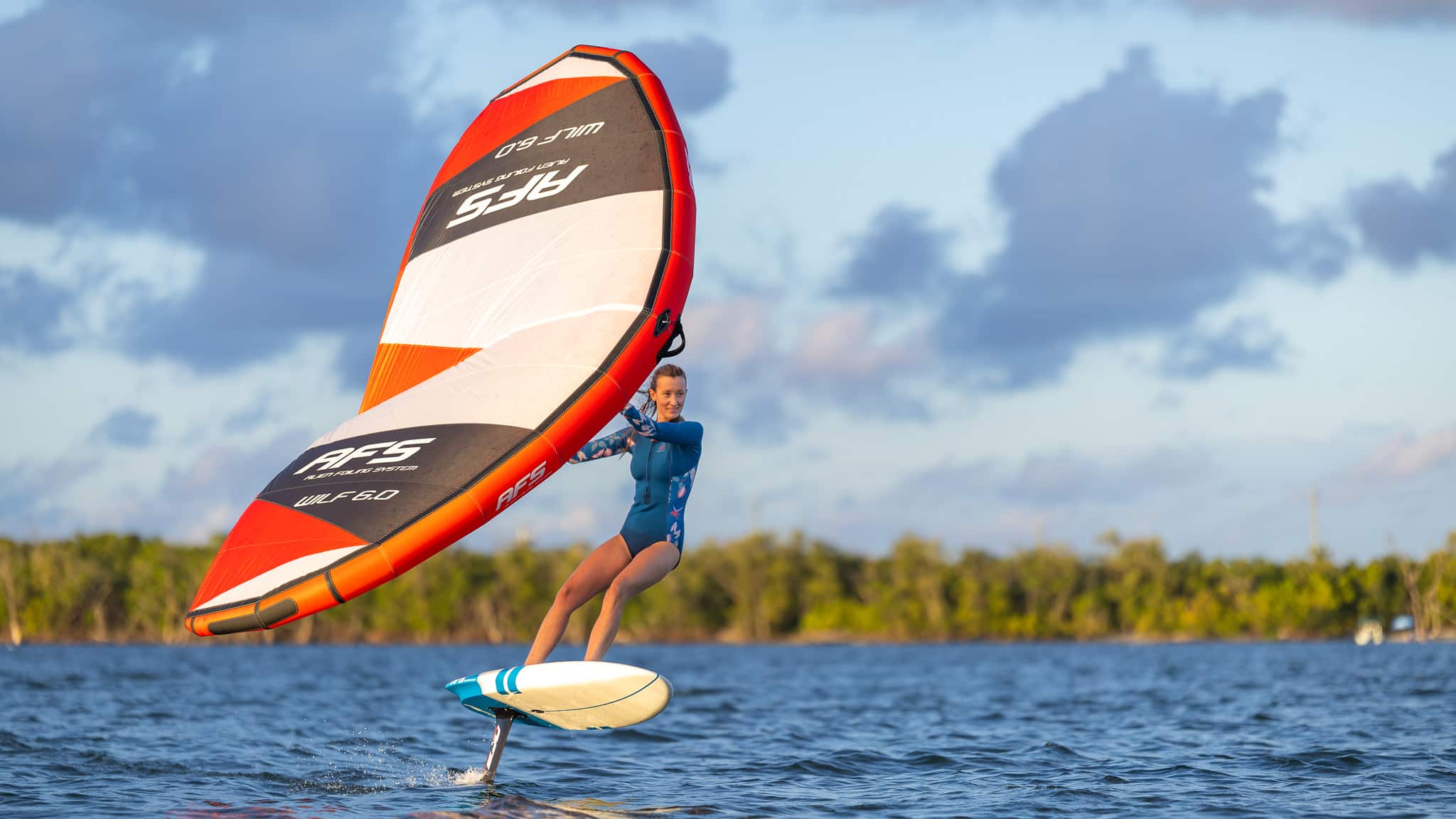What are the ideal sailing conditions for wing foiling?
To get started and improve your wingfoiling skills, it is strongly recommended that you sail in optimal wind conditions. This is essential! Safety must be your priority when you first start wingfoiling.
The spot you choose should definitely not be offshore, i.e. with the wind blowing from land to sea. It’s too dangerous. On the other hand, a sideshore wind, i.e. perpendicular to the beach, or a side onshore wind, are the perfect directions for starting wing foiling. At least you’re sure to come back and you’ll get away from the beach faster.
A moderate wind is ideal for your first sessions as a beginner. This is because it makes it easier to hold and maneuver your wing. In general, a wind range of 15 to 20 knots is recommended for learning. This wind strength provides enough power to generate lift with the foil, while remaining low enough to avoid losing control of your equipment.
In addition, the regularity of the wind is also a valuable asset when you are starting out with wing surfing. A steady wind, without too many gusts, is ideal for maintaining a constant speed on the water and avoiding being thrown off suddenly.
Finally, as you might expect, wind direction is also a super important factor, since it’s your best friend when it comes to moving forward. Sailing crosswind is often the most effective way to take off smoothly and ride easily off the water’s surface. This allows for stable sailing and gradually helps you move upwind. And if you don’t know where the wind is coming from, look around you for a flag or something else that is blowing in the wind. Otherwise, position your face until you feel the wind passing on either side of your ears: this is a sign that it is coming from in front of you.
That’s not all! Choose flat or slightly choppy water for your first attempts so you can progress at your own pace. This is especially important before takeoff, when you are still kneeling on your board, or even standing but still in contact with the water’s surface.
If these weather conditions are met, getting started with wing foiling will certainly be easier. Especially if you have the opportunity to start on a sandy beach with few or no rocks or other obstacles around you. This safe base will then allow you to fully concentrate on wing foiling techniques. Once you have acquired these skills, you will progress faster and in stronger winds… For a more intense gliding experience.
What are the different sailing speeds when wing sailing?
Sails, both in sailing and wing foiling, allow us to control our course and speed. A sail is actually the route we follow in relation to the direction of the wind. Some are faster than others. Even as a beginner, once you have mastered each one, you will be able to move anywhere on the water. In wing foiling, the main points of sail are crosswind, upwind (close-hauled), and downwind.
The crosswind
This is the first stroke to learn when wing surfing, as it helps you maintain your balance on the board. When learning, crosswind (which is oriented at 90% of the wind’s trajectory) lifts the board out of the water more gently and less abruptly.
The close haul or upwind
No, it’s not about sailing directly into the wind, but rather approaching it at an angle of about 45° to where it’s coming from. This involves making long zigzags, sometimes tacking to the left, sometimes to the right, while maintaining a tight angle to the wind.
The largue
This is the opposite of close-hauled. Here, you move away from the wind direction, following a trajectory of approximately 135°. It’s a bit like Aeolus is pushing you in the opposite direction. This is an ideal speed for accelerating and taking off quickly. However, it requires good control of your equipment and experience to avoid drifting and losing your course.
Mastering these speeds allows you to adapt to various sailing conditions and fully explore the potential of wingfoiling. By combining these skills with ideal wind conditions, each session becomes more enjoyable. And your progress will be more noticeable, allowing you to finally enjoy a unique freedom of gliding on the water.
How do I get upwind in a wing foil?
Sailing upwind on a wing foil is an essential skill for navigating effectively and returning to your starting point. This maneuver involves moving closer to the wind while maintaining a sufficient course and angle so as not to drift and sail freely. But before you start what is known as sailing upwind, pick up speed with the wind abeam. And to steer properly, you need to know how to handle your board and wing in relation to the wind, whether you’re stuck to the water or flying. Your foil also allows you to sail close to the wind. This means that all of your equipment becomes a valuable ally in optimizing your upwind sailing.
The position of your wing
Not as much as in windsurfing, but trimming your sail (pulling on it), mainly with your back hand, is the first thing you need to do to sail upwind (after picking up speed). And without bending your arms too much. Your wing should be turned slightly backward and tilted toward the water’s surface. It should be in a horizontal position. To facilitate this movement, use your hips and shoulders, facing them toward the wind.
The angle of the board
You need to maintain an angle of approximately 45° to the wind direction. By gradually tilting your face towards the wind, the nose of your board will naturally follow this direction. Your wing board should gradually adopt a counter-list (it leans towards the water, on the windward side), with your body weight shifted backwards and your buttocks pushed back. The idea is to be more or less in a sitting position, as if you were going to settle into a large armchair without actually sitting down. If your board is equipped with footstraps, only place your front foot inside for your first few runs. Place your second foot just in front of the rear strap. Going upwind will be easier because you will have much more support.
Support on the feet
To increase the angle of the board towards the water surface (the counter-list) and get closer to the direction of the wind, move back a little on the float! And press down hard on your heels! This stabilizes the trajectory and reduces drift. It’s mainly the back foot that does the work… As if you wanted to push your back heel into the board. You need to lighten the front of the board.
Support on the feet
In wing surfing, the foil is the equipment that generates lift to take off but also to maintain speed. By steering your board towards the wind (only once in flight), you will see that the phenomenon becomes more pronounced (almost) automatically. As for foil adjustment, this is an additional factor in improving your ability to sail upwind. Using a foil positioned far back will give you more speed than one mounted at the front of the box; and positioning it far forward will allow you to sail upwind better, but with the risk of ending up completely facing the wind and no longer moving forward (because the foil is completely under the weight of the rider). If you are not yet comfortable, fix the mast of your foil in the middle of the box to maintain the necessary speed and make your first close-hauled turns. Too much pressure on the foil can cause you to veer off course (too far forward), while too little pressure (too far back) can reduce lift. Finally, choose a mast of the right height to ensure stable and smooth gliding. A minimum length of 75 cm, or even 80 cm, is recommended. This will ensure that your board touches the water as little as possible when heeling.
Staying on course
Once you have mastered these parameters, another important step is to remain stable and focused in order to cape and thus maintain a steady course. Set yourself a visual reference point on the water or on land (a landmark) positioned upwind… Or more precisely, a fixed point located upwind (where the wind is coming from at that moment)! Once you have mastered these techniques, sailing upwind will become fundamental to your progress in wingfoiling.
What mistakes should be avoided in wingfoiling to prevent drifting?
In wing foiling, as in windsurfing or any other water sport, drifting can ruin a session and make it frustrating. So how can you avoid this?
Here are the most common mistakes:
Lack of speed
Because you are in too much of a hurry, starting to ride upwind too quickly after takeoff is not the right solution. The lift will only be short-lived and your board will fall back onto the water’s surface.
Incorrect position
Avoid standing up straight with your legs stretched out, your body elongated, and your chest leaning forward. This will make it much more difficult to maintain your balance.
Sailing with the angle of the board too close to or too far from the wind
An angle that is too close will leave you facing the wind… The board will fall back onto the water. And too far away will cause you to sail off course… The board will rise higher and higher until the foil lifts off completely out of the water… And you are sure to fall, because you will lose stability anyway.
Poor foil management
If you don’t press down hard enough with your feet on the board, you risk either losing lift or gradually drifting off course. It is essential to maintain even pressure to stabilize your glide (flight).
Poor wing control
A sail that is not correctly positioned in relation to the wind can cause you to lose control. Do not raise it too high (above your head) or too low (so that it does not touch the water). Above all, it must face you, because if it is too far forward, you will start to sail downwind and may fall!
Lack of focus on Aeolus
Not paying attention to wind direction and strength can cause you to drift. Regularly checking the weather conditions around you is essential for wingfoiling where you want to go, especially when you are far from your starting point.
Once again, riding upwind on a wingfoil is the best way to get back to your starting point and avoid drifting far from shore. It’s also the ideal speed for exploring and expanding your playground. But it’s impossible to sail directly into the wind. However, if you’re able to tack while zigzagging toward the wind, you’ll be more independent. And fully enjoy the joys of sailing and wingfoiling!
